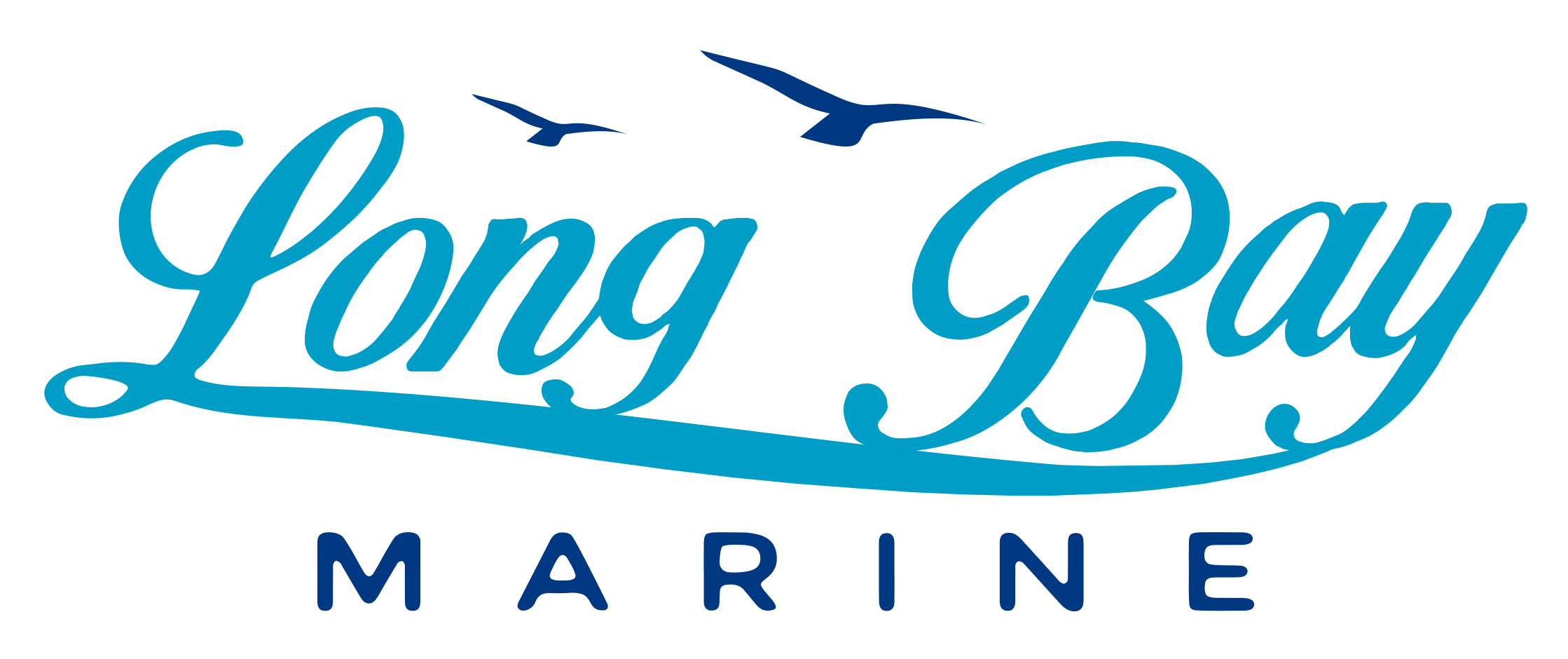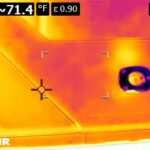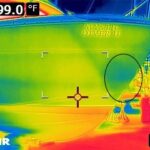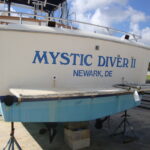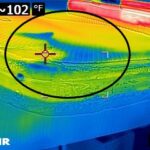- Pre-purchase Boat Survey
- Condition and Value Survey
- Boat Damage and Claims Survey
- Electrical System Survey
- Boat Corrosion Survey
- Boat Oil Analysis
- Infrared Thermography
- Consulting
Pre-purchase Boat Survey
This is the most comprehensive survey we perform; it includes an in-depth examination of the vessel in the water, followed by an out-of-the-water inspection of the hull & all its wetted components, along with a sea trial of the vessel. We utilize a variety of tools during our surveys such as plastic hammer for soundings, moisture meter, multi-voltage clamp meter, digital snake camera, Infrared Thermography camera, and digital camera, but our most important tool is a flashlight and our eyes. If you are present at the survey (which we recommend), you are given a verbal report on our significant findings. The survey culminates in a written report, emailed to you in a timely manner, including extensive photo documentation that lists all detectable findings, deficiencies, market value, and recommendations on:
- documentation and equipment

- safety items
- structural integrity of the hull
- electrical systems
- propulsion components
- fuel system
- navigational equipment
- entertainment equipment
- fishing equipment
- corrosion protection
- cosmetic appearance
- maintenance items
- sanitation/waste system
- freshwater system
- vessel’s estimated value
Please contact me for additional questions or to schedule a survey.

Boat Condition and Value Survey (C&V)
Also known as an Insurance Survey, is typically performed at the request of an insurance company to determine whether or not the vessel is an acceptable risk. Usually, insurance companies are concerned with structural integrity and safety items associated with the ship’s intended use.
Many insurance companies will require a survey on older boats periodically or when writing a new policy. They will also need to know a vessel’s current market value.
It is the client’s responsibility to communicate with their insurance company to determine specific requirements for inspection (i.e., inspection of wetted surfaces required?).
Please contact me for additional questions or to schedule a survey.
This inspection may be requested by a financial institution or an attorney to determine the current fair market value of a boat for financing or legal issues such as estate, tax or divorce settlements. After looking the boat over, we provide a written report via email on the market value in your given area.
Please contact me for additional questions or to schedule a survey.
Boat Oil Analysis
An Oil/Fluid Analysis may give you a better understanding of an engine, gearcase, and cooling system’s overall state of health. We will take a sample of the oil/coolant you want tested and overnight it to an independent lab for a spectrometer analyzes. The detailed report you receive by email will have all the vital numbers on your oil sample, along with a reference point for comparison. There will also be a general statement from the lab regarding the oil sample and overall engine health.
Please contact me for additional questions about this or our other services.
First Look Inspection/Consulting
This custom service is tailored for our out-of-town buyers who would like a walk-thru of a boat they are considering buying. Before investing in a plane ticket or a full survey, we can take a look on your behalf. We can supply pictures, video, or just a verbal report; it’s really up to you.
Need further understanding and inspection of a specific system? This service is custom fit to your particular needs without requiring a full-service marine survey.
Please contact me for additional questions about this or our other services.
Infrared Thermography
Infrared Thermography is non-destructive testing of materials such as Fiberglass, engine components, fasteners, electrical motors, and connectors using a high-quality IR (Infrared) camera. Infrared energy is part of the electromagnetic spectrum and behaves similarly to visible light. All objects emit infrared radiation as a function of their temperature and, depending on the makeup of the material, give off a different heat signature. It is those differences that need to be interpreted.
Marine surveyors use Infrared (IR) cameras to see things that cannot be seen with the naked eye. However, it should not be the sole source for confirming or eliminating a potential problem.
The pictures above show why things are not always what they seem. This hull was showing a higher-than-average moisture reading on the bow using a Tramex moisture meter. The IR camera was showing an area that may be holding moisture which warranted a closer look. I found the reason for the moisture in the anchor locker, which was a bunch of wet lines. No issues with the hull at all.
It is your surveyor’s responsibility to investigate potential issues using his knowledge of the boat’s systems and operation along with other tools such as a moisture meter, snake camera, or other means to find out the source of the problem he encountered. Your surveyor should be using a high-quality IR camera (not one that clips onto a cell phone) and be adequately trained to interpret the images provided by his camera.
Our Flir E95 Camera is always in our tool bag; we do not charge any additional fees to put it to use during engine, electrical, or hull surveys. We want you to get the WHOLE PICTURE!
So this boat is showing its age, and the swim platform has apparently received some damage. The question is has water migrated into the material. The IR image on the right tells the story. It’s wet!
Areas with moisture heat up more slowly and retain heat longer than areas that are not wet hence the difference in temperature and the differences in color with an IR camera. Our camera measures temperature differences at 161,472 points at 464X348 pixel resolution.
Use the slider in the middle to compare what you see with the naked eye…and what we see with a high-quality Infrared camera.






Check out our Google reviews.


